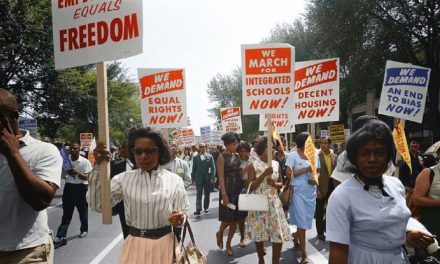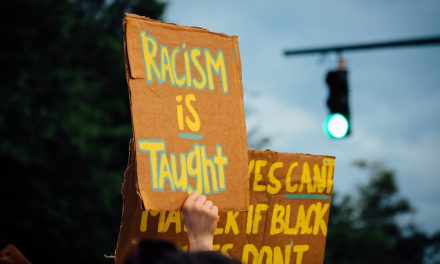The recent killing of George Floyd has intensified the hurt and anger from years of targeted violence, oppression, and racism that many Black Americans have endured. With days of social unrest, there is a sense of sheer devastation about the role race plays in American culture.
Parents of black children pray their sons and daughters are never listed among the litany of black people who have been unmercifully killed by police. They pray the younger generation will accomplish what their generation couldn’t – demanding parity among all people, the kind of parity that evens the scales, and levels the playing field.
As this country experiences a reckoning with centuries of racists acts, practices, and brutality, there is a shift in the atmosphere. The veil has lifted. Now, the putrid stench of an American way of life, dressed up in the guise of democracy, is exposed for the world to see.
Many parents of black boys made it a point to have “the talk” with their sons before they reached middle school. These boys received explicit lessons about how to respond if ever approached by a police officer. These lessons were reinforced as they grew older. In the last few years, it has become apparent that this talk should be extended to their daughters, too.
Many white Americans are having the talk, as well. This one is not about the dos and don’ts when approached by the police. Instead it’s about white privilege — defined by Oxford as inherent advantages possessed by a white person based on race in a society characterized by racial inequality and injustice.
The truth is, so-called white privilege will continue to lace American culture as long as white people leverage this false sense of superiority to maintain the higher rung within the power dynamic – at the expense of people of color. [This] caveat should also be included in the discourse about how white privilege, when not used for the greater good, endorses racism, social injustice, and inequality.
For those who believe this is all much ado about nothing, it is truly important to understand that racist constructs run deep and take on many facets, to the extent of crippling access to lifelines, like health care and behavioral health services, for black people and other marginalized groups. According to National Center for Health Statistics, black women die during pregnancy or in the months after giving birth at 2.5 times more often than white women, and three times more than Hispanic women. Lack of health care access and racism play a role in the maternal death rate among black women.
Oxford defines racism as prejudice, discrimination, or antagonism directed against a person or people based on their membership of a particular racial ethnic group, typically one that is a minority or marginalized. Merriam-Webster defines racism more simply as belief that certain races of people are by birth and nature superior to others; or, discrimination or hatred based on race.
Racism is also referred to as a variety of practices, beliefs, social relations, and phenomena that work to produce a racial hierarchy and social structure that yield superiority, power, and privilege for some, and discrimination and oppression for others. Racism typically manifests in seven different forms: representational, ideological, discursive, interactional, institutional, systemic, and structural.
Representational racism feeds racial stereotypes in popular culture about certain groups. For instance, people of color are often cast in movies and on TV as brutes, criminals, and thugs. Team mascots (i.e., Atlanta Braves, Washington Redskins, Kansas City Chiefs, etc.) are another example of representational racism. Some may see this form of racism as noninvasive and subtle, but it fosters negative connotations that are offensive to those depicted in this manner.
Ideological racism has played a deadly role in police interactions with Black Americans. Brutal, unnecessary murders of black men and women continue to play out in U.S. cities. Ideological racism is a system of beliefs, that black men and boys, for instance, are criminal-minded. This has been known to negatively impact black children in the educational system, and sometimes feeds the school to prison pipeline. Ideological racism has negatively impacted black adults in professional settings, in certain neighborhoods, and certainly heightens police surveillance and use of force. The sixth leading cause of death for black men is murder by the police.
Discursive racism is another term for hate speech, racial slurs, and coded language like dog whistles. Representational racism is depicted pictorially, and discursive racism is depicted with words, and in public discourse.
Interactional racism is expressed in how people interact with or around certain groups. For instance, when a person of color is followed while shopping at a high-end store and watched closely by a sales attendant, or totally ignored because it is assumed he or she can’t afford the merchandise. Or, if a white or Asian woman crosses the street to avoid passing a Black or Latino man out of fear. Or more recently, the white woman who called the police on a black man who was simply bird watching in Central Park.
Institutional racism plays out in policies and laws through American institutions that disproportionately affect and negatively impact people of color. Examples are Reagan’s “War on Drugs” that targeted neighborhoods and communities predominantly composed of people of color. Another example is New York’s Stop-N-Frisk policy that largely targeted Blacks and Latinxs, or redlining in predominantly black and brown communities by mortgage lenders to make it difficult for people of color to own property. Sometimes its educational standards that stick children of color into remedial classes and trade programs. As for institutional racism in health care, it is manifested by the stereotypes that health care providers bring to their jobs that informs, motivates, and establishes how health care is delivered based on who the recipient of care is. COVID-19 exposed this harsh reality. The fact is, black people die at a rate 2.4 times higher from the coronavirus than their white counterparts. It is difficult to square this statistic solely on the basis that blacks suffer from comorbidities and multiple comorbidities more than other groups.
Systemic racism is a social system founded on racists ideals, constructs, policies, and laws. It is a legacy system that permeates how a society (or country) moves, from its inception to all other facets that make up that society. Systemic racism sometimes refers to how ideas of white superiority are captured in everyday thinking at a systems level.
Structural racism is a complex system, comprised of all the above forms, by which racism is developed, maintained, and protected. It is the normalization and legitimization of an array of dynamics – historical, cultural, institutional, and interpersonal—that routinely give advantage to white people while producing cumulative and chronic adverse outcomes for people of color. It is a system of hierarchy and inequality, primarily characterized by white supremacy. Another way to say this is the preferential treatment, privilege, and power of white people at the expense of Black, Latinx, Asian, Native Americans, and other racially oppressed people.
It is important to know the faces of racism, so that when it shows up, it is recognized and confronted. While it is encouraging to see the many nonblack individuals protesting and demanding change, privilege and influence must now be leveraged to address the health care inaccessibility that disproportionately affects people of color.








